The earliest-known pub on this site was The Green Dragon, known to have been in existence in 1702. This present pub replaced that one in 1801 and is called The Rochester Castle because it was built by Richard Payne, from Rochester.
Framed drawings of Stoke Newington.
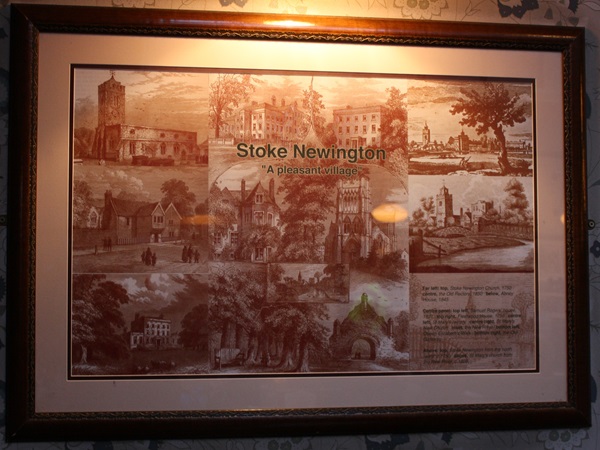 #
#
Far left: top, Stoke Newington Church, 1750 centre, the Old Rectory, 1850 below, Abney House, 1854
Centre panel: top left, Samuel Rodgers’ house 1877 top right, Fleetwood House, 1750 centre left, St Mary’s rectory centre right, St Mary’s New Church inset, the New River bottom left Queen Elizabeth’s Walk bottom right, the Old Gateway.
Above: top, Stoke Newington from the North West, c1750 above, St Mary’s church from the New River, c1800.
Framed paintings and text about St Mary’s Church and TH Shepherd.
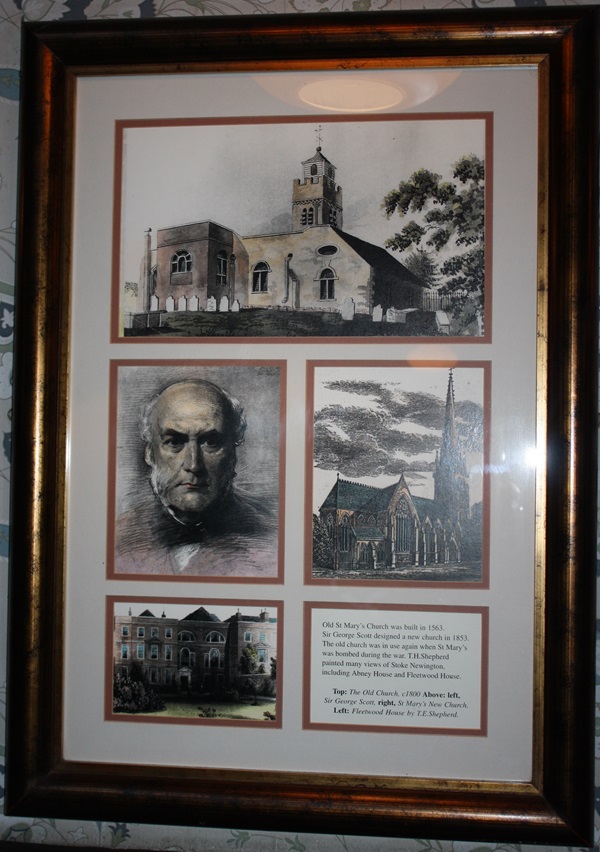
The text reads: Old St Mary’s Church was built in 1563. Sir George Scott designed a new church in 1853. The old church was in use again when St Mary’s was bombed during the war. T.H. Shepherd painted many views of Stoke Newington including Abney House and Fleetwood House.
Top: The Old Church, c1800
Above: left, Sir George Scott, right, St Mary’s New Church.
Left: Fleetwood House by T.H.Shepherd.
Framed photographs, drawings and text about education.
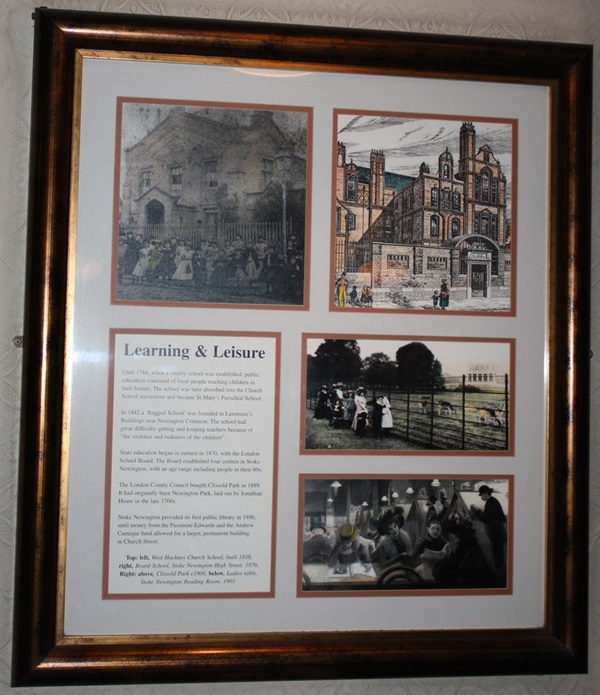
The text reads: Until 1784, when a charity school was established, public education consisted of local people teaching children in their homes. The school was later absorbed into the Church School movement and became St Mary’s Parochial School.
In 1842 a ‘Ragged School’ was founded in Lawrence’s Buildings near Newington Common. The school had great difficulty getting and keeping teachers because of “the violence and rudeness of the children”.
State education began in earnest in 1870, with the London School Board. The Board established four centres in Stoke Newington, with an age range including people in their 80’s.
The London County Council bought Clissold Park in 1889. It had originally been Newington Park, laid out by Jonathan Hoare in the late 1700s.
Stoke Newington provided its first public library in 1890, until money from the Passmore Edwards and the Andrew Carnegie fund allowed for a larger, permanent building in Church Street.
Top: left, West Hackney Chruch School, built 1838, right, Board School, Stoke Newington High Street, 1876. Right: above, Clissold Park c1900, below, Ladies table, Stoke Newington Reading Room, 1901.
Framed paintings and text about Sir Thomas Sutton and Thomas Cubitt.
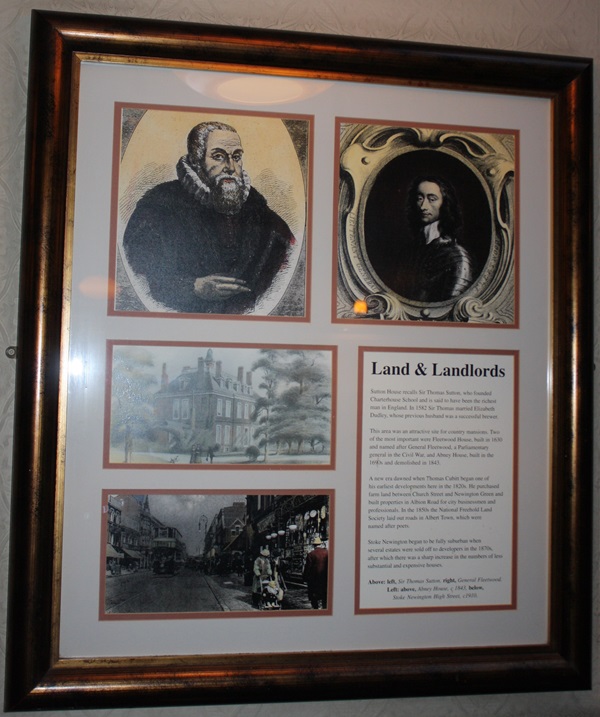
The text reads: Sutton house recalls Sir Thomas Sutton, who founded Charterhouse School and is said to have been the richest man in England. In 1582 Sir Thomas married Elizabeth Dudley, who previous husband was a successful brewer.
This area was an attractive site for many country mansions. Two of the most important were Fleetwood House, built in 1630 and named after General Fleetwood, a Parliamentary general in the Civil war, and Abney House, built in the 1690s and demolished in 1843.
A new era dawned when Thomas Cubitt began one of his earliest developments here in the 1820s. He purchased farm land between Church Street and Newington Green and built properties in Albion Road for city businessmen and professionals. In the 1850s the National Freehold land Society laid out roads in Albert Town, which were named after poets.
Stoke Newington began to be fully suburban when several estates were sold off to developers in the 1870s, after which there was a sharp increase in the numbers of less substantial and expensive houses.
Above: left, Sir Thomas Sutton, right, General Fleetwood.
Left: above: Abney House c 1843, below, Stoke Newington High Street, c1910.
Framed paintings and text about Morton’s Academy, Daniel Defoe and Abney Park.
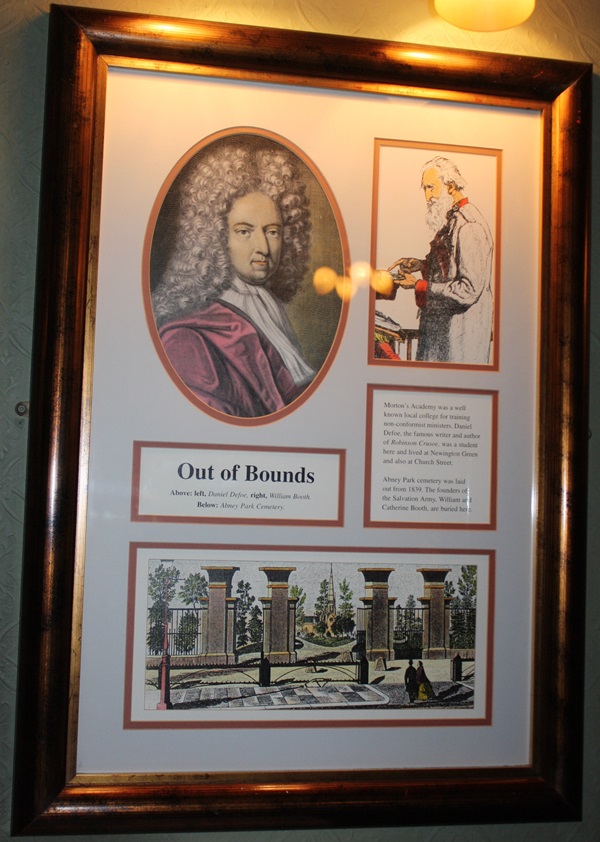
The text reads: Morton’s Academy was a well-known local college for training non-conformist ministers. Daniel Defoe, the famous writer and author of Robinson Crusoe, was a student here and lived at Newington Green and also at Church Street.
Above: left, Daniel Defoe, right, William Booth. Below: Abney park Cemetery.
Framed photographs, drawings and text about Samuel Rodgers, Daniel Defoe, Lord Lytton and FM Evans.
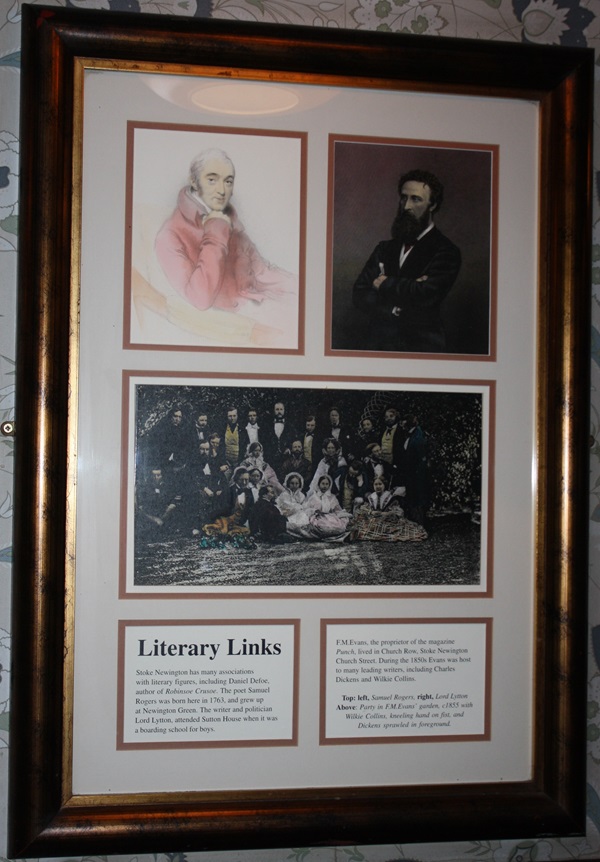
The text reads: Stoke Newington has many associations with literally figures, including Daniel Defoe, author of Robinson Crusoe. The poet Samuel Rodgers was born here in 1763, and grew up at Newington Green. The writer and politician Lord Lytton attended Sutton house when it was a boarding school for boys.
F.M.Evans, the proprietor of the magazine Punch, lived in Church Row, Stoke Newington Church Street, During the 1850s Evans was host to many leading writers, including Charles Dickens and Willkie Collins.
Top: left, Samuel Rodgers, right, Lord Lytton Above: Party in F.M.Evans’ garden, c1855 with Wilkie Collins, kneeling hand on fist, and Dickens sprawled in foreground.
A framed painting of Daniel Defoe.
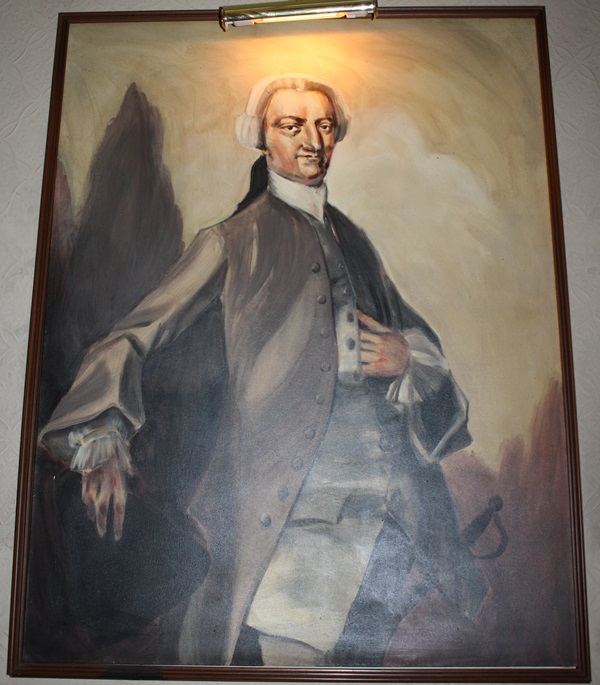
This was painted for The Rochester Castle by A Foster.
Framed photographs, drawings and text about Samuel Rogers, Anne Laetitia Barbauld, Mary Wollstonecroft, John Howard, Edgar Allen Poe and Dr Isaac Watts.
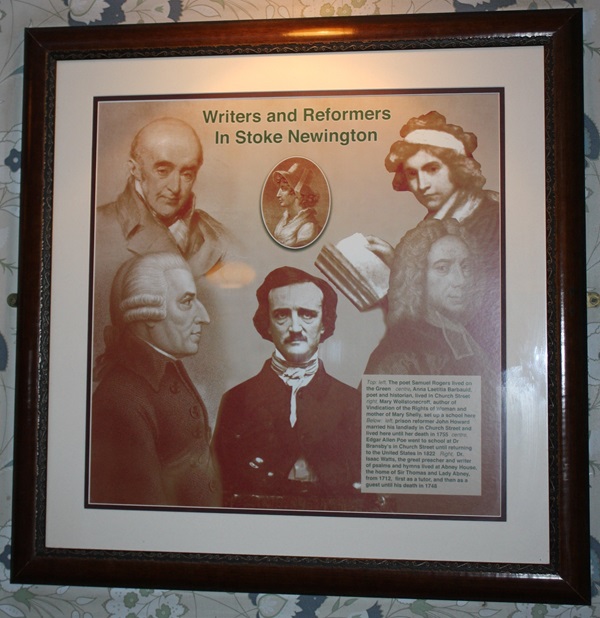
The text reads: Top: left, The poet Samuel Rogers lived on the green centre, Anne Laetitia Barbauld, poet and historian, lived in Church Street right, Mary Wollstonecroft, author or Vindication of the Rights of Women and mother of Mary Shelly, set up a school here Below: left, prison reformer John Howard married his landladt in Church Street and Lived here until her death in 1755 centre, Edgar Allen Poe went to school at Dr Bransby’s in Church Street until returning to the United States in 1822 Right, Dr. Isaac Watts, the greatest preacher and writer of psalms and hyms lived at Abney House, from 1712, first as a tutor, and then as a guest util his death in 1748.
An original wall feature entitled Spring.
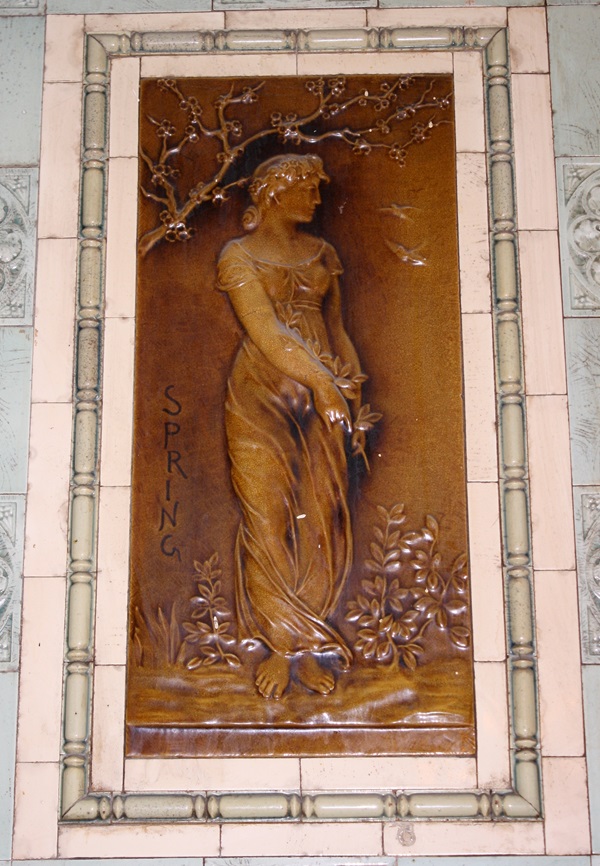
An original wall feature entitled Summer.
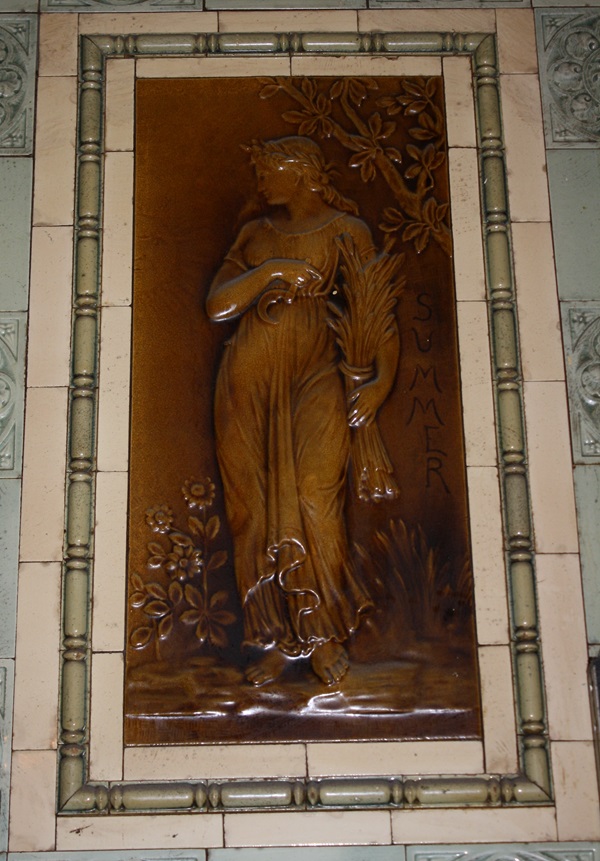
An original wall feature entitled Autumn.
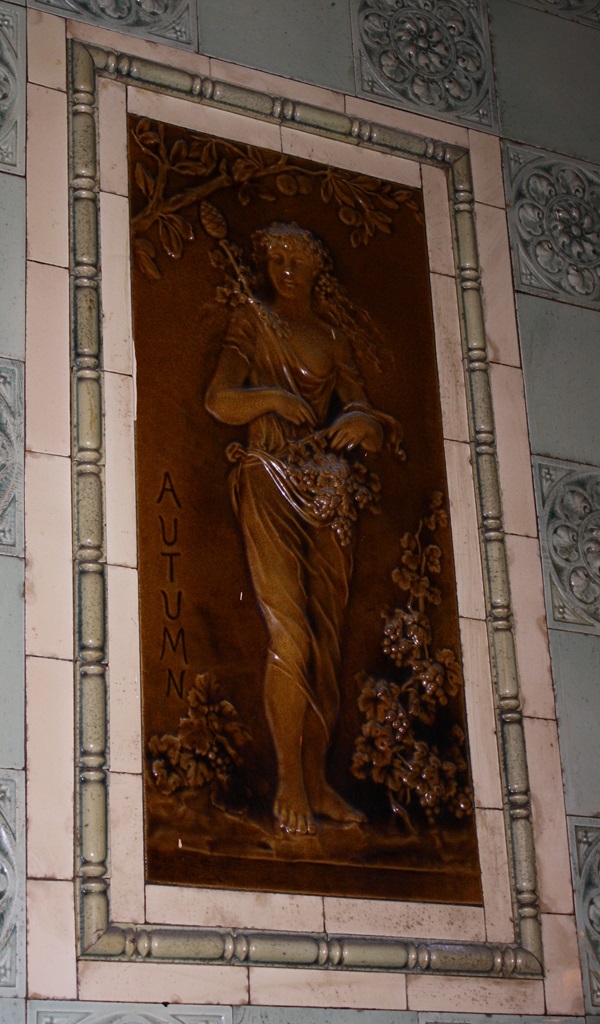
An original wall feature entitled Winter.
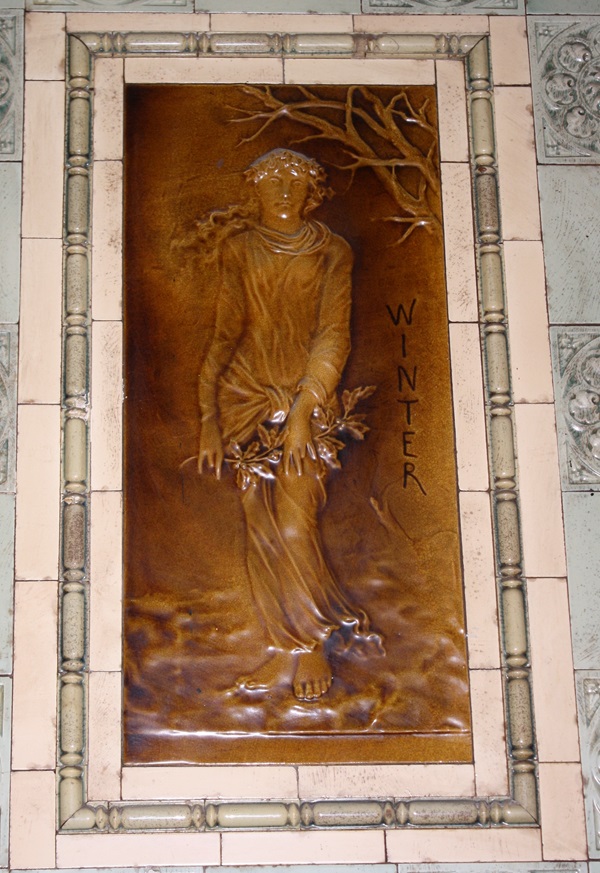
A canvas painting.
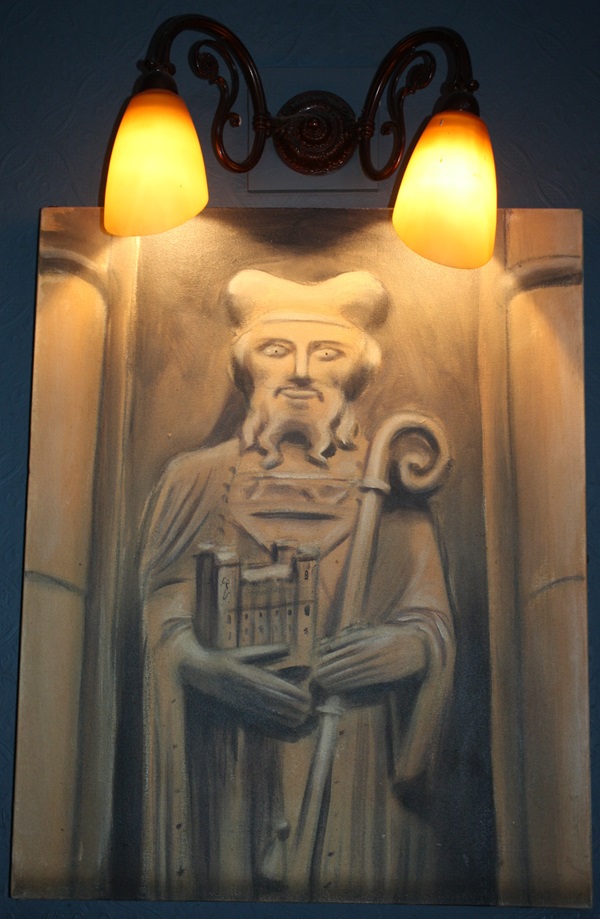
The title and artist are unknown.
A framed painting of Rochester Castle.
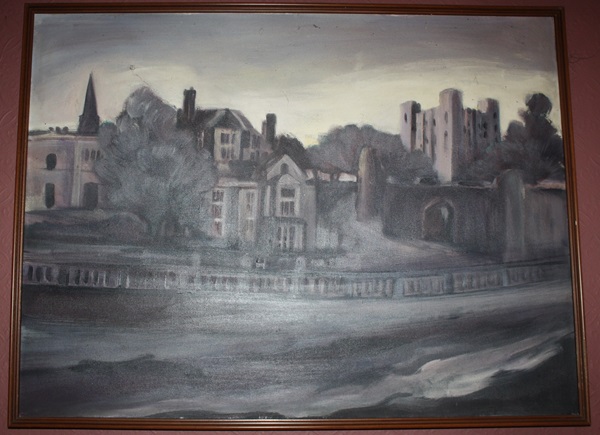
A canvas painting of Rochester Castle.
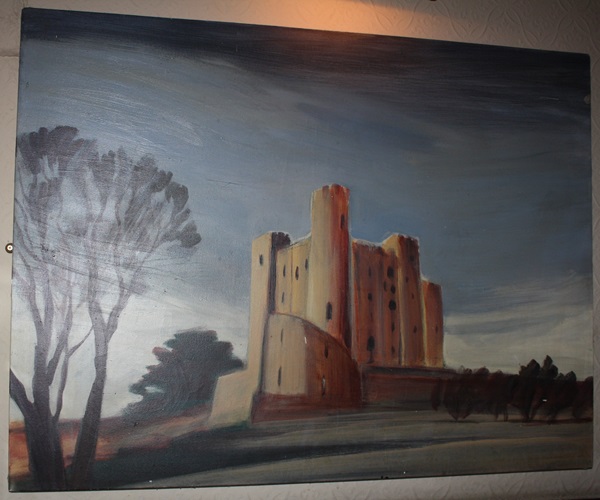
Internal photo of seating area.
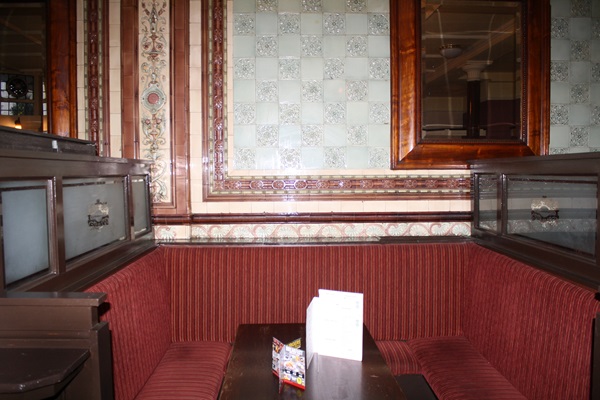
This is an original booth from when this Wetherspoon pub opened. The tiling on the walls is also an old feature.
Internal photo of the back room’s ceiling.
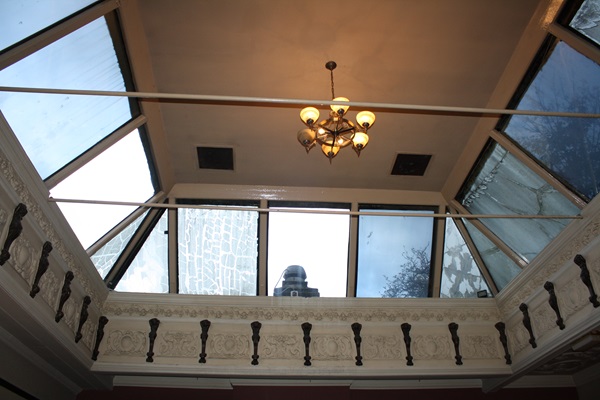
This is an original feature.
External photo of the building – front.
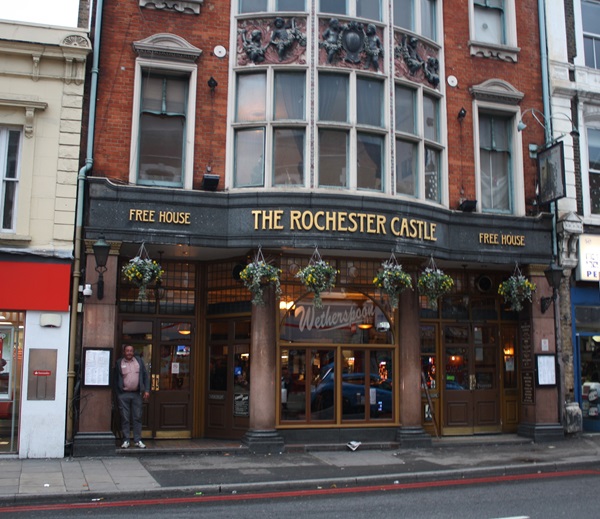
External photo of the building – front.
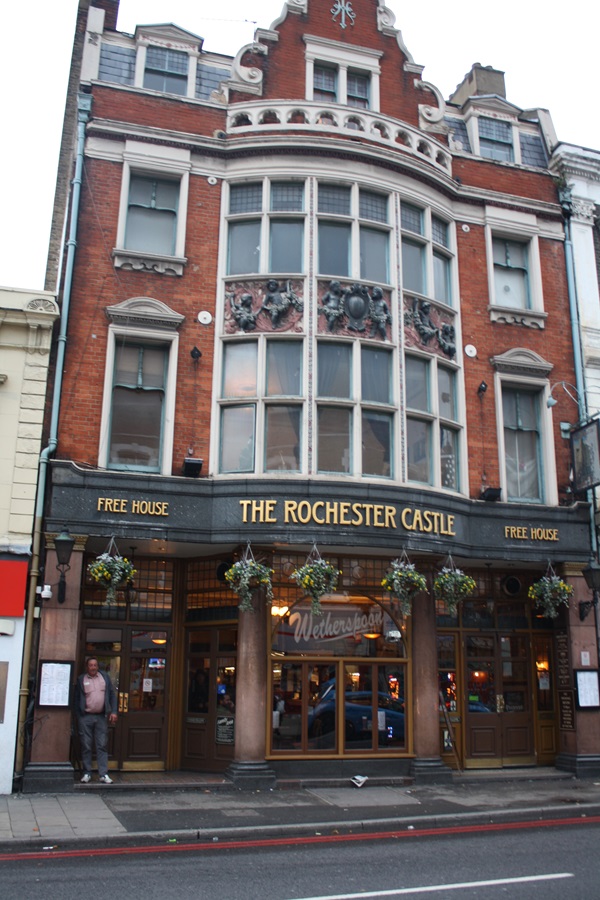
If you have information on the history of this pub, then we’d like you to share it with us. Please e-mail all information to: pubhistories@jdwetherspoon.co.uk